First up, Figgy's Tee for Two in the leftover teal floral.
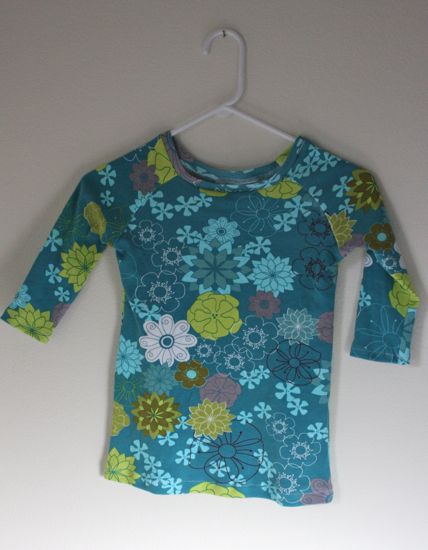
Kid-sized clothes sometimes look weird on full-size hangers.
I made the sleeves as long as I could with the fabric I had, thus the three-quarters-ness of them, but otherwise, I think this came together pretty well for a using-up-leftovers kind of project.
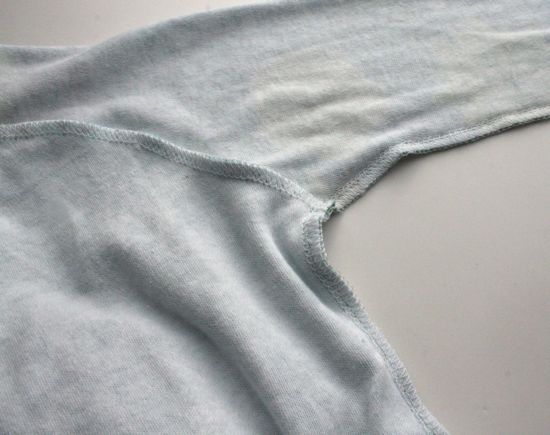
I used my neighbor's serger for most of this project. Fun stuff, serging. In hindsight, I don't think I had the tension quite right but all-in-all, it's not bad for a first time out with a new-to-me machine. I'd read so many things about how difficult sergers are to thread and was pleased to discover that while it's more complicated than a regular machine, I didn't think it was all that difficult.
Of course, I had to push my luck. I found a manual online that suggested the serger I was using could do a kind of overlocked hem/finishing stitch and I thought I'd try it. I made the adjustments as the manual instructed, but the results weren't anything I'd want readily visible. I reversed the instructions, restored everything to how it was at the beginning, and that was it. The serger didn't want to make any nice and tidy seams any more. I think the looper timing is off.
The hem and cuffs of the teal shirt are zigzagged with my regular, reliable Bernina. As is all the construction and details on this pink top, McCall's 6157:
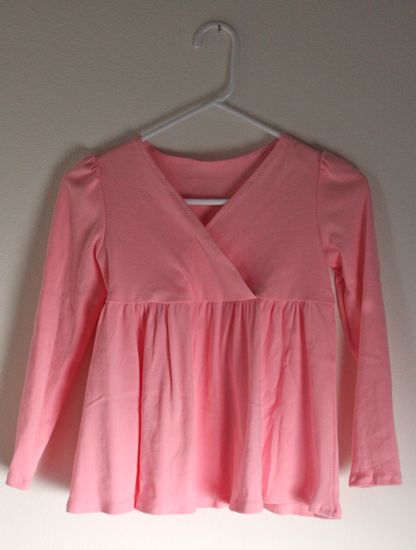
I think I need either more practice or a reference book for knits. I added strips of fusible interfacing (something I'd seen recommended over at 3 Hours Past) to the shoulder seams and to the neckline to keep the knit from stretching. It may have worked for the shoulder seams, but the neckline stretched. It's wearable only because I thought to have Caitlyn put it on to get the cross-over part right. If I'd relied on pattern markings, it'd be all gappy up front. I'm going to blame the presser foot for this; when I finally switched to my walking foot for the hem, the stretching became less of a problem.
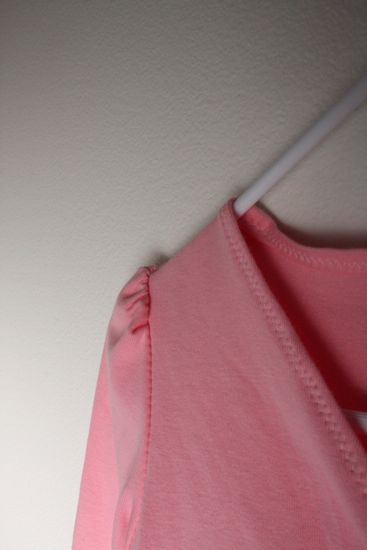
I do like how these gathered sleeves came out. Caitlyn was pretty excited about the sleeves as well, although not the gathered part. "Mama, you made a long-sleeved shirt!" Followed by a big hug. Points for Mama!
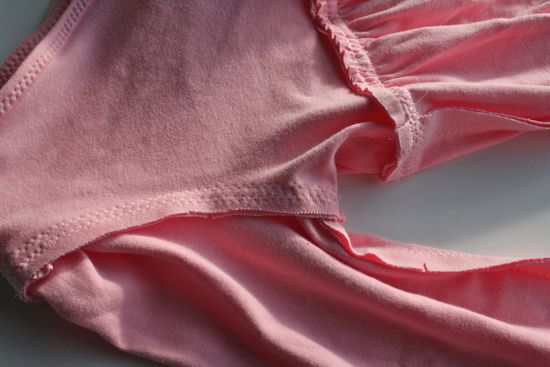
Doing two back-to-back knits, one on a serger and one on my regular machine, has provided a fine chance to compare the two. I double stitched a lot of the seams in the pink top to provide extra strength, but otherwise things are unfinished. And knits may not ravel like wovens, but the serger finish just seems so much more polished. I like the durability of the two-needle seam, the decreased bulk from trimmed seams, the general inner tidiness.
So, I need a serger. My general inclination is to find a serger with the bare minimum. I think what I said when I was in the market for a sewing machine was that I needed it to go forward and backward and that was it. I've got a solid machine that's held up well to garments, sewing, random mending, and two international moves. But I do find myself thinking now that more than two decorative stitches might be nice. So I'm wondering if perhaps settling for the bare minimum is really the smartest move now. If I'm wanting to expand my tool chest, as it were, maybe I should go whole hog.
If anyone has any serger-shopping wisdom, please share!

I have a Brother 1034D which works great. It's not totally bare bones, but it's not crazy fancy either. Definitely does the job well. My only problem is threading the thing . . . which I hear is a toughie for most people no matter what machine they have. If only I could take a serger class I'd be all set. That's what I really want. I'm saying my troubles with the serger are all user error and not serger error. It's a solid machine and worth looking into.
ReplyDeleteThanks! I'll be sure to take a class or two!
DeleteI have to repeat, because I'm sure I've mentioned this either in conversation or in a comment post, I wish I had gone straight to the Baby Lock with air threading as soon as it was available. I held out for a long time because I had a perfectly serviceable Bernette 004D serger and it seemed silly to spend so much on a new serger when I had one that (I thought) worked just fine and I didn't mind the threading procedure. I was kind of proud that I had mastered it because, as you note, everyone says it's so hard.
ReplyDeleteSo, after much research, I bought a stand alone Babylock coverstitch machine for hems because, as you also note, the hems on knits are a problem. I had worked out a system that made my hems LOOK like they were coverstitched from the outside using a double needle, but they didn't FEEL like coverstitched knit hems because they didn't stretch. It's amazing how much that little feeling of tightness around the hem of a shirt can bug a person who notices that sort of thing. I don't know where you and Caitlyn come down on the Princess and the Pea scale, but if you're anywhere near the "real princess" end, it's a factor worth considering.
Then, because my coverstitch machine came with air jet threading for the one looper it has, I quickly became a convert and invested in the Babylock Imagine 4-thread serger. I'm SO glad I did. Not only is the threading easier and quicker, but the tension control and stitch production on the Imagine are head and shoulders above anything my 004D produced, even when it was brand new and properly threaded.
I still like having the coverstitch and serger separate. Babylock does make a machine that can do both but I hear the conversion process is a pain and takes a bit of time. I love being able to move from one machine to another instantly to do seams and then hems in any order I like. Having space for the 3 machines on my sewing desk is an issue, but I make it work. Also, you need piles of thread when you have so many machines. After a while, you get a pretty good collection and you can also wind bobbins of matching thread for the small amount it takes to do hems and top-stitching and fill in with serger cones where the thread won't show so you don't have to buy so many matching spools for each new project.
One final comment on the shoulder seam support, most serger feet have a slot that allows you to pass 1/4 inch stay tape or elastic through and the machine applies the tape as you make the seam. It's pretty cool once you get the hang of it.
You have shared your experience before, but it's nice to be reminded and have it an easily-locatable spot! I'll have to write up a whole thing about my decision process when it's done. :)
Delete